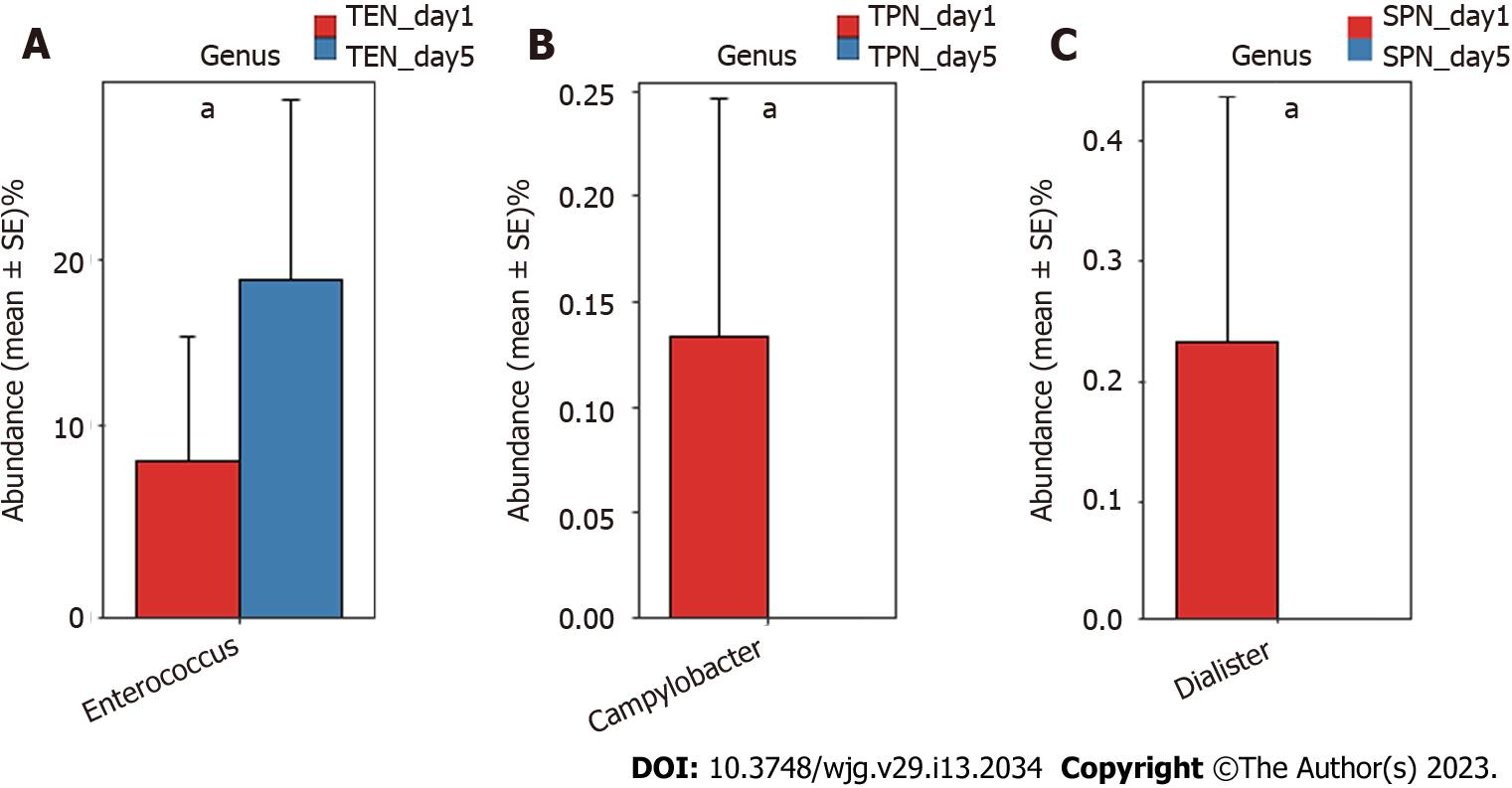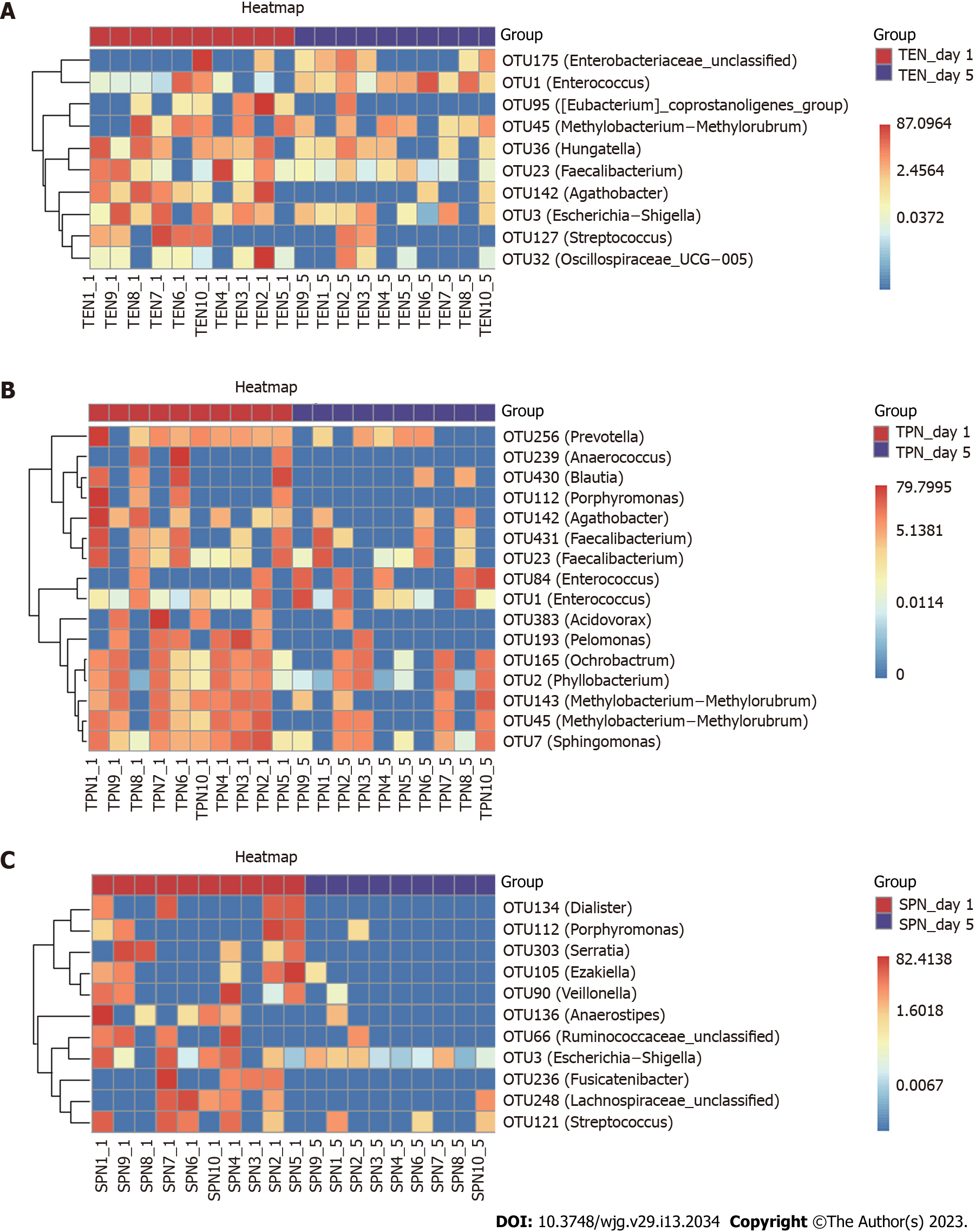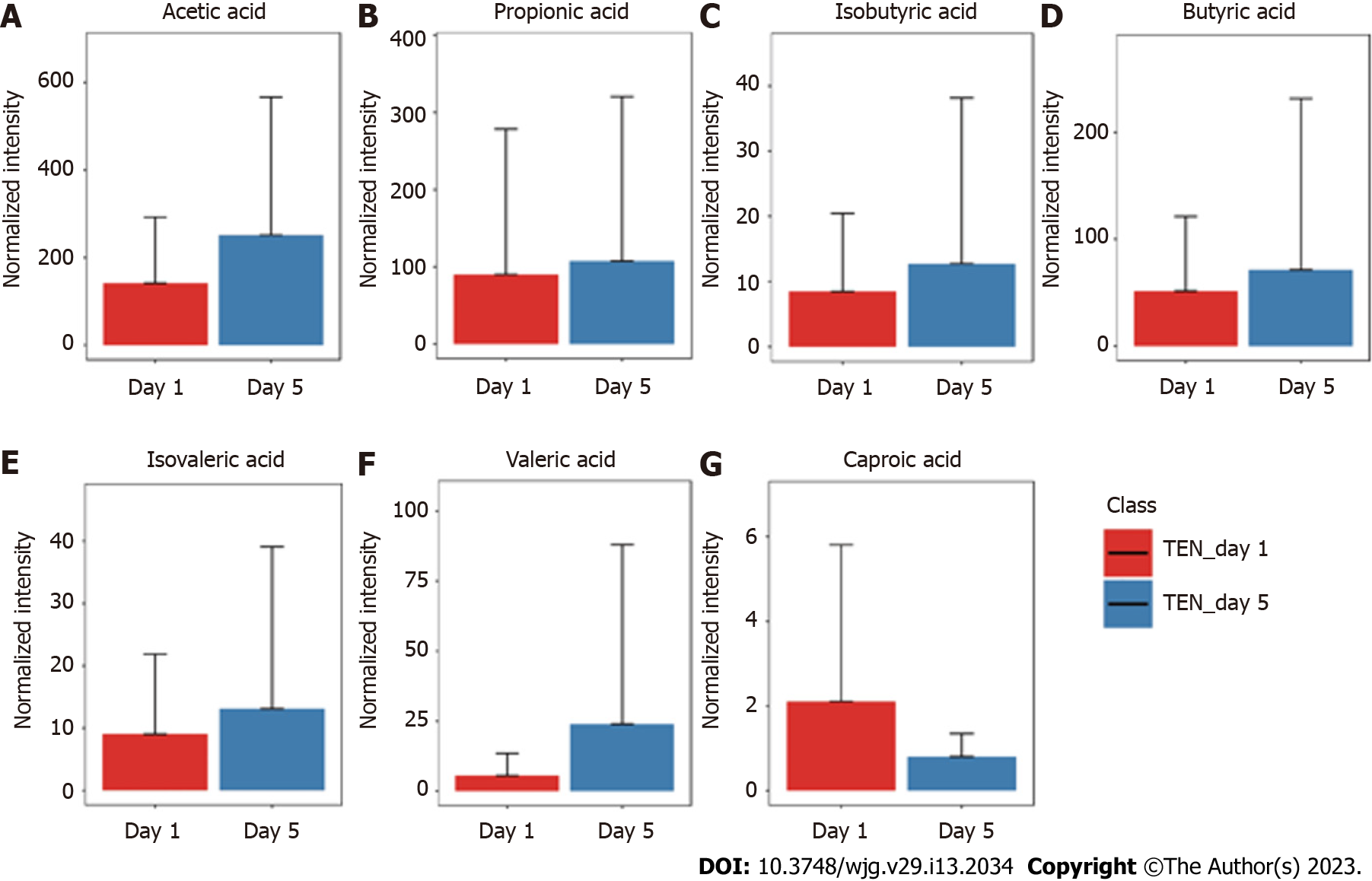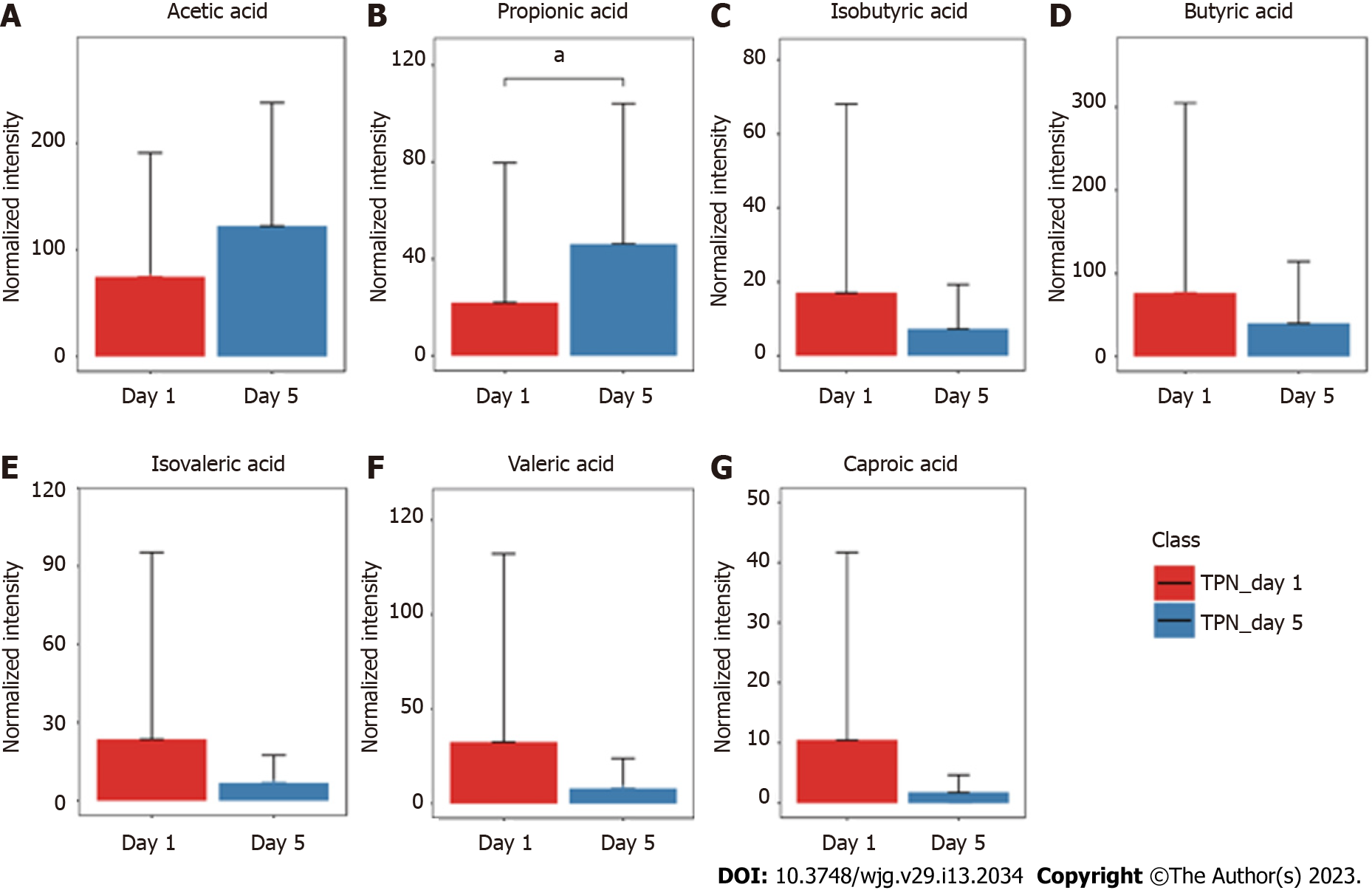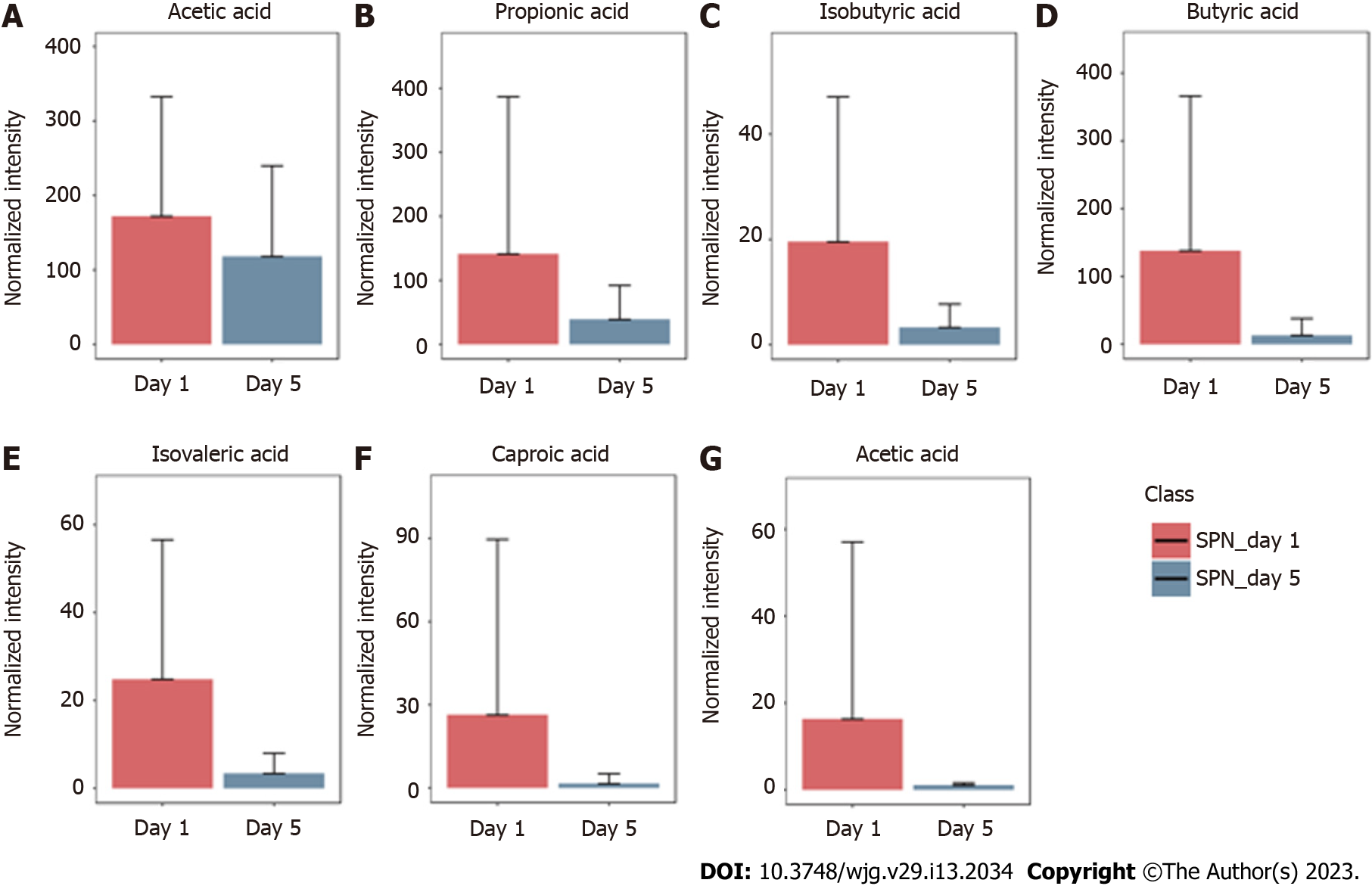Copyright
©The Author(s) 2023.
World J Gastroenterol. Apr 7, 2023; 29(13): 2034-2049
Published online Apr 7, 2023. doi: 10.3748/wjg.v29.i13.2034
Published online Apr 7, 2023. doi: 10.3748/wjg.v29.i13.2034
Figure 1 The key bacterial taxa significantly changed before and after nutrition support at the genus level.
[Red: Before nutrition support (day 1); blue: After nutrition support (day 5)]. A: Total enteral nutrition; B: Total parenteral nutrition; C: Supplemental parenteral nutrition. The relative abundance of each genus is depicted as the mean ± SE. P values were calculated using the Mann–Whitney U test: aP < 0.05. TEN: Total enteral nutrition; TPN: Total parenteral nutrition; SPN: Supplemental parenteral nutrition.
Figure 2 Heatmaps display the key gut microbial operational taxonomic units influenced by three types of nutritional support.
A: Total enteral nutrition; B: Total parenteral nutrition; C: Supplemental parenteral nutrition. The key operational taxonomic units are selected by Random Forest approach according to the changes of relative abundance before and after nutritional support. TEN: Total enteral nutrition; TPN: Total parenteral nutrition; SPN: Supplemental parenteral nutrition; OTU: Operational taxonomic unit.
Figure 3 The changes of short-chain fatty acids before and after nutrition support in the total enteral nutrition group.
[Red: Before nutrition support (day 1); blue: After nutrition support (day 5)]. A: Acetic acid; B: Propionic acid; C: Isobutyric acid; D: Butyric acid; E: Isovaleric acid; F: Valeric acid; G: Caproic acid. TEN: Total enteral nutrition. The abundance of each short-chain fatty acid is depicted as the mean ± SD.
Figure 4 The changes of short-chain fatty acids before and after nutrition support in the total parenteral nutrition group.
[Red: Before nutrition support (day 1); blue: After nutrition support (day 5)]. A: Acetic acid; B: Propionic acid; C: Isobutyric acid; D: Butyric acid; E: Isovaleric acid; F: Valeric acid; G: Caproic acid. TPN: Total parenteral nutrition. The abundance of each short-chain fatty acid is depicted as the mean ± SD. P values were calculated using the Student's t-test: aP < 0.05.
Figure 5 The changes of short-chain fatty acids before and after nutrition support in the supplemental parenteral nutrition group.
[Red: Before nutrition support (day 1); blue: After nutrition support (day 5)]. A: Acetic acid; B: Propionic acid; C: Isobutyric acid; D: Butyric acid; E: Isovaleric acid; F: Valeric acid; G: Caproic acid. SPN: Supplemental parenteral nutrition. The abundance of each short-chain fatty acid is depicted as the mean ± SD.
Figure 6 Correlation analysis between gut microbiomes, short-chain fatty acids and nutritional immune indicators after nutritional support for patients with sepsis.
Network graph constructs based on Spearman’s correlation analysis. The results showed correlations among 60 predominant fecal microbial genera, 7 short-chain fatty acids (SCFAs) and 7 clinical immune and nutritional indicators. Connecting lines represent the significant correlation (P < 0.05). Red lines indicate negative correlations, blue lines indicate positive correlations, and the width of the lines represents the strength of the correlation. The transparency of the lines represented the negative logarithm of the P value of correlation. The size of the points indicates the relative abundance of genera. The colors of points display the different phyla of the microbiome. The circle represents the fecal microbiome, the square represents the SCFAs, and the diamond represents plasma metabolites.
- Citation: Yang XJ, Wang XH, Yang MY, Ren HY, Chen H, Zhang XY, Liu QF, Yang G, Yang Y, Yang XJ. Exploring choices of early nutritional support for patients with sepsis based on changes in intestinal microecology. World J Gastroenterol 2023; 29(13): 2034-2049
- URL: https://www.wjgnet.com/1007-9327/full/v29/i13/2034.htm
- DOI: https://dx.doi.org/10.3748/wjg.v29.i13.2034









